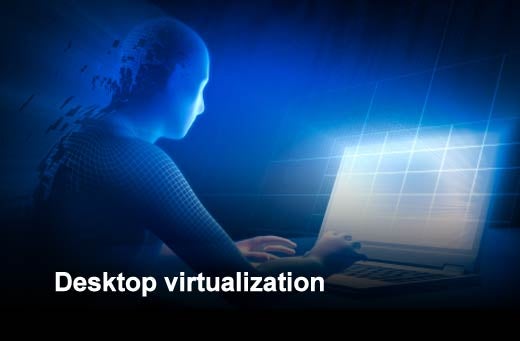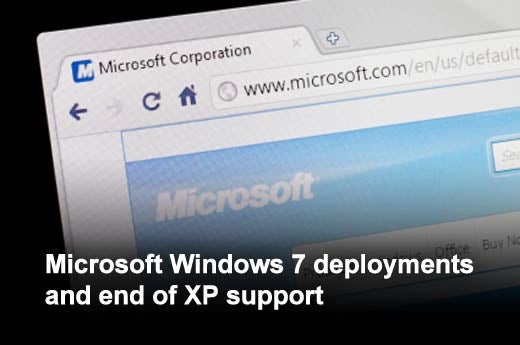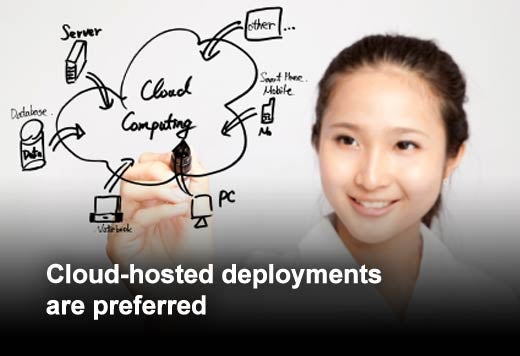Recent talk regarding a potential spin-off of HP’s PC business drove a heated debate about whether other technology firms might do the same. Will the PC continue to provide value to end users or has its grave been dug?
Global information and communications technology provider Dimension Data recently commissioned a survey on the desktop virtualization market, conducted by Forrester Research, revealing growing trends that may provide some answers. Although factors such as cost, administrative and user familiarity and legacy ecosystems could keep the PC on life support in the short term, there are other powerful forces that may propel its demise. These forces include worker mobility, the rise of smartphones and tablets, and perhaps most significantly, the growth of cloud computing and virtualization, which is rendering local storage and processing power – traditional hallmarks of the PC – much less significant than in the past.
So ultimately, it may simply be a question of “when” not “if” a range of mobile computing devices displaces the PC for all but the most specialized use cases and applications.
In this slideshow, Dimension Data highlights some of the key data from the Forrester survey, “The Client Virtualization Imperative,” that will inevitably impact the future of the PC. For this research, Forrester surveyed nearly 550 enterprises with 500 or more employees – from every region of the world – regarding their client virtualization and end-user computing strategies.
Click through for findings from a desktop virtualization study commissioned by Dimension Data and conducted by Forrester Research.
The employee ecosystem is evolving, with more organizations looking beyond “task” workers to highly mobile, remote and information-focused workers. Fifty-one percent of firms said that they are planning to deploy application/desktop virtualization for mobile workers, and the same percent also plan to deploy it for remote/branch office workers. The now-constant need for connectivity during travel, or for telecommuting employees, has led businesses to provide support for all kinds of mobile devices, reducing the need for the PC from an end-user perspective.
While PCs still remain a primary endpoint right now, 20 to 22 percent of organizations said they’re already providing support for employee-owned laptops, tablets and smartphones, with a further 16 to 21 percent planning to do so over the next two years. Fifty percent said that they see improved self-service as a primary reason for supporting employee-owned smartphones, tablets, netbooks and laptops, while 47 percent see lower purchase costs as a key driver for embracing BYOD. Driven by employees’ consistent dependence on their smartphones and tablets, as well as their personal preferences for devices used to access the corporate network at all times, businesses have started developing formal BYOD policies to support user choice and increasing mobile device contingency.
Fifty-nine percent of respondents said that security is a major factor driving their interest in client virtualization. Virtualization technology enables organizations to remove all data from user machines and instead host it in the data center or public cloud. Thereby, reducing the impact of a lost or stolen machine that could potentially lead to a data security breach. IT managers who have successfully deployed client virtualization experienced dramatic improvements in their data security processes and patch management efficiencies.
More than 50 percent of companies ranked desktop and application virtualization as a critical or major initiative over the next 12 to 18 months. Local desktop virtualization enables desktop managers to provision virtual desktops as files rather than as individual, physical PCs. This desktop is fully managed and secured by the same policies that govern physical PCs. Because a virtual desktop has all the attributes of a file — albeit a large file — it can be encrypted and backed up, helping streamline regulatory compliance and business continuity processes.
Nearly 30 percent of respondents are deliberately aligning their investments in Microsoft Windows 7 and desktop virtualization. Because virtualization reduces dependencies between the hardware, OS, applications, user settings and data layers, organizations are selectively taking advantage of this technology as they architect modern and more flexible systems for their users.
Forty-eight percent of respondents surveyed have considered cloud-hosted applications (SaaS) as an operational model as they plan their new/continued IT investments, while 45 percent considered cloud-hosted desktops (VDI). User diversity and decentralized and mobile work forces are forcing organizations to take hybrid approaches that balance their technology options with cloud-hosted, streamed, on-premise and thick-client solutions that are optimized for heterogeneous environments.









